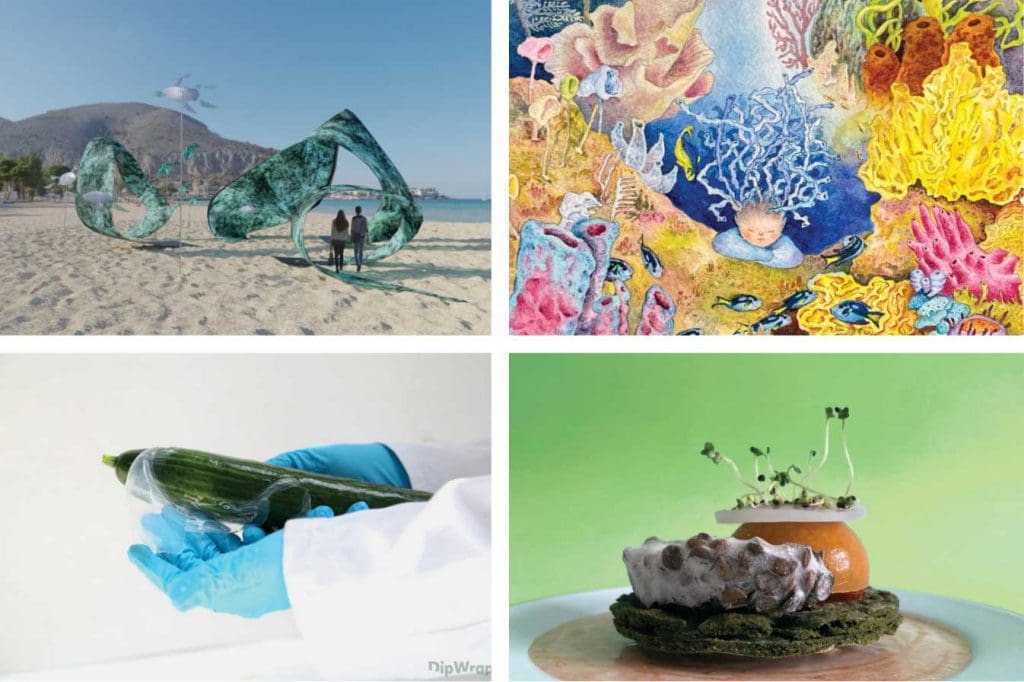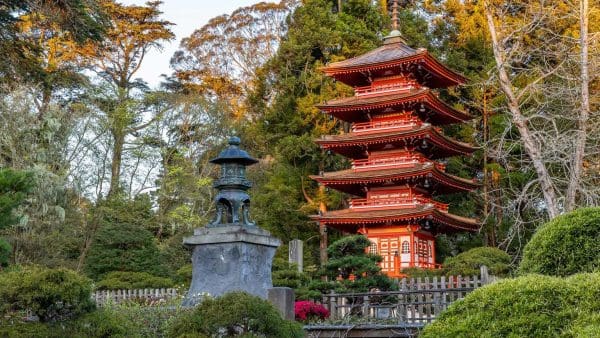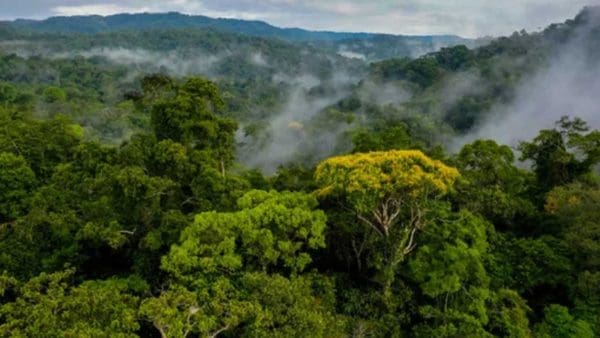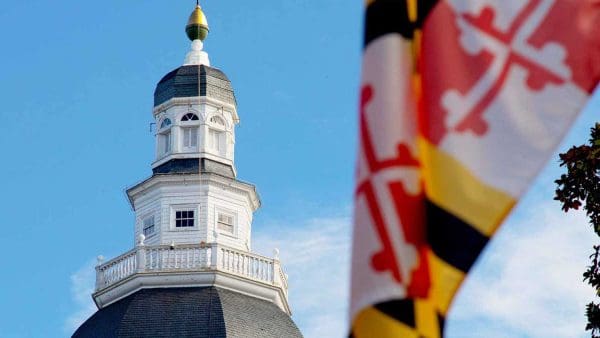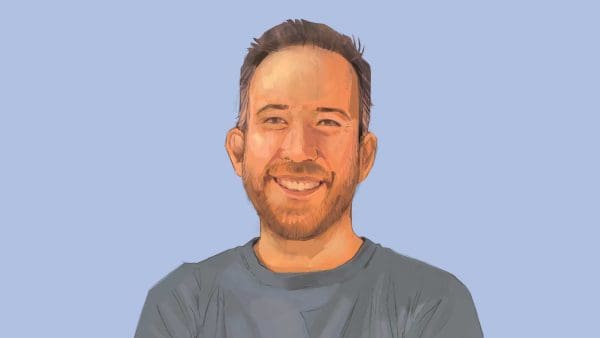At the first annual summit of the Biodesign Challenge (BDC) in New York in June 2016, a group of students from the Fashion Institute of Technology presented swatches of fabric made of a yarn-like material that they had synthesized from kelp.
“And the judges chose them as the winner,” says Daniel Grushkin ’99, founder and executive director of the BDC. “The wonderful thing is that their material is sustainably sourced, and of course it biodegrades, so theoretically, when you’re done with your knitwear, you can add it to the compost to feed your plants,” he says.
After the competition, the students went on to form AlgiKnit, a company that produces eco-conscious, renewable yarns and employs 16 people in Brooklyn.
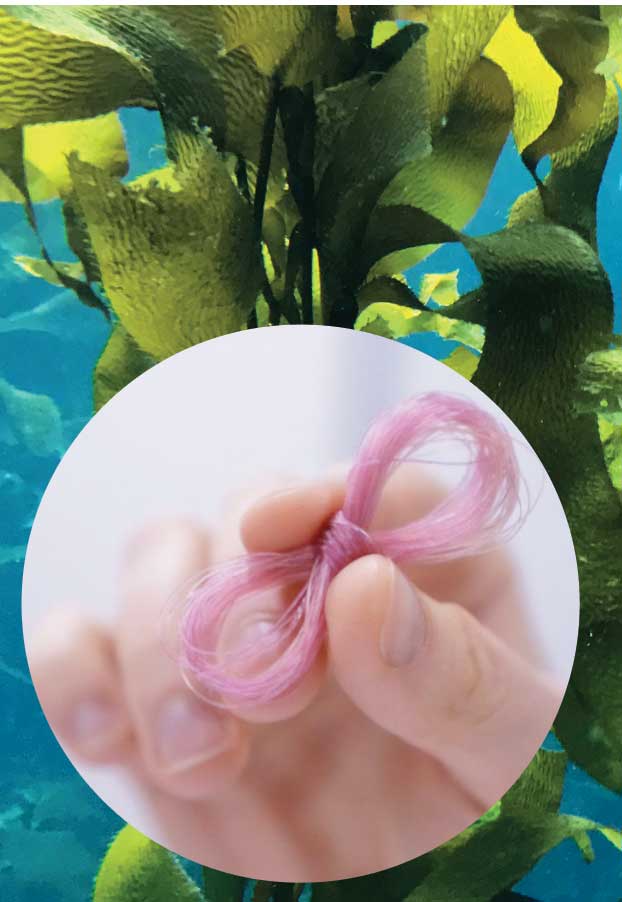
from kelp.
Now in its seventh year, the Biodesign Challenge is an international competition for high school and university students. The competition brings together scientists, artists, and designers to imagine and create new applications of biotechnology. Students work in teams on projects throughout the school year while receiving guidance from local mentors identified by BDC. Then, in June, the finalist teams gather at a summit where they present their projects to a panel of judges. The panel includes scientists, artists, designers, entrepreneurs, and others—and compete for prizes, including the grand trophy: the “Glass Microbe.”

It became clear to me that if we’re going to see really thoughtful applications of biotechnology in the world, it was going to come through collaborations like these.”
—Daniel Grushkin
Genspace
Before starting BDC, in 2009 Grushkin co-founded Genspace, a community laboratory also located in Brooklyn. Initially billed as a “hacker space for biology,” Genspace offers members of the general public the opportunity to pursue their own biotechnology projects independently. The members include those from nontraditional and underrepresented backgrounds.
Grushkin has long been interested in exploring connections between the worlds of art and science. As an undergraduate at Hopkins, he majored in English while also taking a number of math and physics classes. After graduating, he worked as a reporter for several years and found himself drawn to writing about science.
“I started to get interested in the culture of science, and in how science becomes business, and then I got interested in how science really becomes culture and art,” he says.
Reporter to Founder
In 2008, he began writing about the emerging field of synthetic biology. He heard about a group of scientists in New York who were interested in bringing the tools of the laboratory into their homes for a “do-it-yourself” version of bioengineering.
That appealed to me—it both raised hackles and seemed concerning [from a biosecurity perspective], and at the same time, it seemed really exciting,” he says.
As a reporter, he attended the first organizational meeting of these scientists at a diner. At the end of the meeting he found himself offering his apartment as the location for the next meeting. “And so I went very quickly from being a reporter to one of the founders of what ended up becoming Genspace,” he says.
As Genspace was evolving, Grushkin started to notice that not only scientists were showing up at the community laboratory. Also artists and designers, who would sometimes collaborate with the scientists in meaningful ways.
“It became clear to me that if we’re going to see really thoughtful applications of biotechnology in the world, it was going to come through collaborations like these,” he says.
Biodesign Challenge
So, in 2015, Grushkin launched the Biodesign Challenge. The program is geared toward young people that would encourage this kind of cross-disciplinary discussion and interaction.
The program started at nine U.S. high schools in 2015-16. It has since grown to include 51 high schools and universities in 20 countries. BDC has also found a number of sponsors, including biotech firms like Ginkgo Bioworks and Twist Bioscience. But also Stella McCartney, the fashion brand, and Barilla, the pasta company.
Looking toward the future, Grushkin believes biodesign will eventually become a standard design discipline at art and design schools. He thinks that ideas coming out of biodesign will increasingly be adopted by companies looking for sustainable solutions.
“I think that the decisions about how technology gets distributed and rolled into the world—how it emerges into the world—don’t belong only in the hands of entrepreneurs and/or scientists,” he says. “There needs to be a community conversation that involves people from different backgrounds who are knowledgeable and can speak the language of the science. What’s important is that we’re bringing those other voices into the conversation.”

